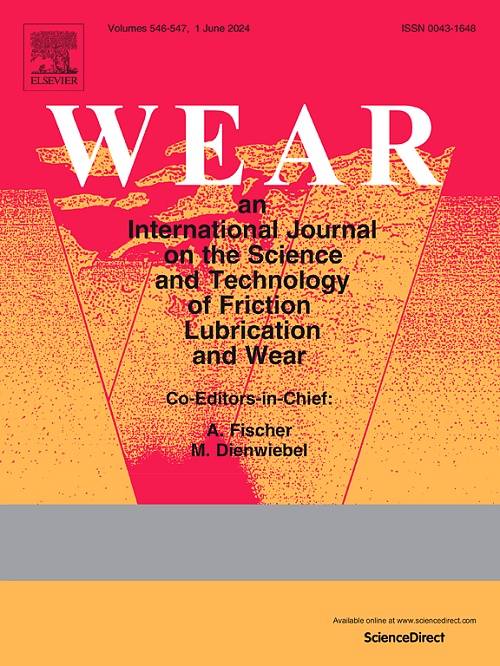集料矿物硬度和石英含量对路面长期摩擦磨损影响的实验分析
IF 6.1
1区 工程技术
Q1 ENGINEERING, MECHANICAL
引用次数: 0
摘要
研究了影响路面集料长期摩擦性能的因素,重点研究了平均硬度(AH)、对比硬度(CH)和矿物选择在集料硬度参数(AHP)中的作用。通过实验分析,我们探索了聚集体的矿物组成,特别是石英的存在,如何影响它们在交通诱导抛光下的摩擦保留。我们的研究结果表明,虽然AH提供了有用的见解,但它并不能完全预测长期摩擦。相比之下,CH在保持表面纹理和摩擦方面起着至关重要的作用,它解释了硬矿物和软矿物之间的差异抛光。随着时间的推移,具有良好调节的硬矿物和软矿物混合的骨料,特别是那些在中等石英含量水平下具有最佳CH的骨料,表现出优越的摩擦保持能力。本研究强调了同时考虑AH和CH的重要性,以及占骨料含量超过5%的矿物在预测和提高路面材料长期摩擦性能方面的重要性。本文章由计算机程序翻译,如有差异,请以英文原文为准。
Influence of aggregate minerals hardness and quartz content on long-term pavement friction and wear: An experimental analysis
This study investigates the factors influencing the long-term friction performance of pavement aggregates, focusing on the roles of Average Hardness (AH), Contrast Hardness (CH), and the selection of minerals in the Aggregate Hardness Parameter (AHP). Through experimental analysis, we explored how the mineralogical composition of aggregates, particularly the presence of quartz, affects their friction retention under traffic-induced polishing. Our findings show that while AH provides useful insights, it does not fully predict long-term friction. In contrast, CH, which accounts for differential polishing between hard and soft minerals, plays a crucial role in maintaining surface texture and friction. Aggregates with a well-adjusted mix of hard and soft minerals, especially those with optimal CH at intermediate quartz content levels, exhibited superior friction retention over time. This study highlights the importance of considering both AH and CH, as well as the significance of minerals constituting more than 5 % of the aggregate content, in predicting and enhancing the long-term frictional properties of pavement materials.
求助全文
通过发布文献求助,成功后即可免费获取论文全文。
去求助
来源期刊

Wear
工程技术-材料科学:综合
CiteScore
8.80
自引率
8.00%
发文量
280
审稿时长
47 days
期刊介绍:
Wear journal is dedicated to the advancement of basic and applied knowledge concerning the nature of wear of materials. Broadly, topics of interest range from development of fundamental understanding of the mechanisms of wear to innovative solutions to practical engineering problems. Authors of experimental studies are expected to comment on the repeatability of the data, and whenever possible, conduct multiple measurements under similar testing conditions. Further, Wear embraces the highest standards of professional ethics, and the detection of matching content, either in written or graphical form, from other publications by the current authors or by others, may result in rejection.
 求助内容:
求助内容: 应助结果提醒方式:
应助结果提醒方式:


